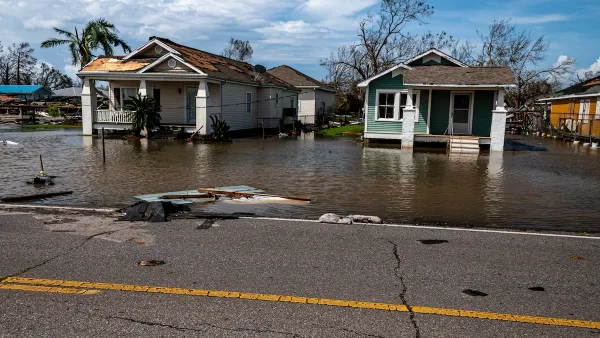In response to the latest Southern California wildfires, site locations and climate must be more carefully considered by the people who build and approve subdivisions, writes Christopher Hawthorne.
"Since the middle of the 20th century, this is how we have developed much of our new housing in the U.S., and particularly in Southern California: by pushing deep into canyons and deserts and onto flood plains. We build reassuringly familiar-looking subdivisions, decorated with vaguely Spanish or Mediterranean accents, in locations that by land-use standards -- and by common-sense standards -- are truly exotic. We build with the unstinting belief that growth is good and that progress in the form of various kinds of technology -- new building materials, military-style firefighting, a vast system of pumps and levees -- will continue to make it possible to construct new pockets of nostalgic architecture virtually anywhere."
"But maybe our nostalgia should extend beyond red-tile roofs to include earlier lessons about how and where it is safe to build. This country's culture as a whole is in the midst of a profound shift from the unshakable confidence that marked the so-called American Century to a new recognition of risk, conservation, even fragility. Green architecture, with its rather old-fashioned emphasis on paying attention to site and climate, is part of that shift. But those who build and approve new hillside developments -- 'the lords of subdivision,' as nature writer Richard Lillard called them, the 'replanners of the Earth's surface' -- have barely acknowledged it."
FULL STORY: New developments mask wild land's deadly threat

Planetizen Federal Action Tracker
A weekly monitor of how Trump’s orders and actions are impacting planners and planning in America.

Vehicle-related Deaths Drop 29% in Richmond, VA
The seventh year of the city's Vision Zero strategy also cut the number of people killed in alcohol-related crashes by half.

As Trump Phases Out FEMA, Is It Time to Flee the Floodplains?
With less federal funding available for disaster relief efforts, the need to relocate at-risk communities is more urgent than ever.

Santa Monica May Raise Parking Permit Fees
The city says the changes would help better manage curb space and support its sustainability goals.

Portland Housing Bond Created Nearly 5,000 Units, But Affordability Remains Out of Reach
Despite better-than-expected results from multiple local housing bonds, housing costs and homelessness remain top of mind for many Oregonians.

Florida Law Could Eliminate Dedicated Bus Lanes
A new law calls for a minimum ridership of 6,000 passengers in the first year for new bus rapid transit lines. To date, no bus lines in the Tampa Bay region come close.
Urban Design for Planners 1: Software Tools
This six-course series explores essential urban design concepts using open source software and equips planners with the tools they need to participate fully in the urban design process.
Planning for Universal Design
Learn the tools for implementing Universal Design in planning regulations.
Sarasota County Government
Borough of Carlisle
Smith Gee Studio
City of Camden Redevelopment Agency
City of Astoria
Transportation Research & Education Center (TREC) at Portland State University
Camden Redevelopment Agency
City of Claremont
Municipality of Princeton (NJ)


























